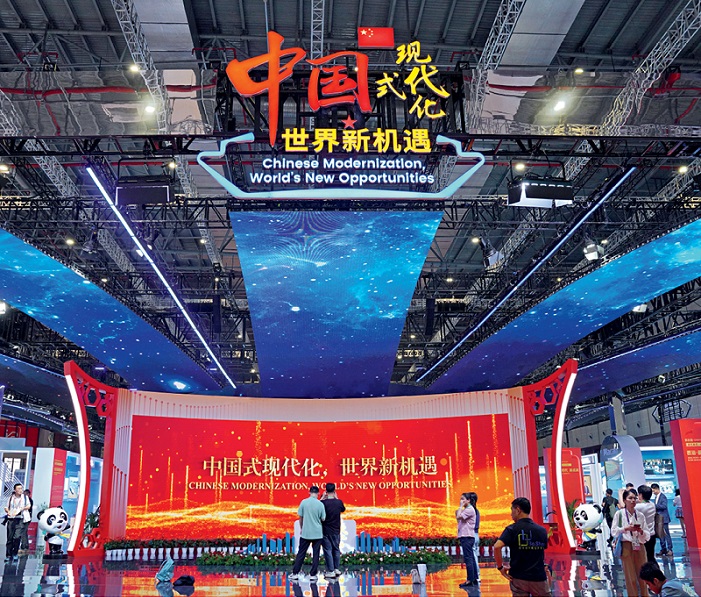
The China Pavilion at the sixth CIIE covers a total area of 2,500 sq.m, setting a new record high. Consisting of five sections, the pavilion showcases the bountiful achievements of China in fields across the board like trade, investment, innovation, and smart manufacturing. Yu Jie
Forty-five years on, China’s opening-up drive has raked in an accumulated foreign investment of US $2.9 trillion with more than 1 million foreign-funded firms established in the country. A raft of policies and measures have been rolled out for greater integration in globalization. China’s first pilot free trade zone (FTZ) in Shanghai’s Pudong New Area, established to undertake transformative reforms on a trial basis that could later be applied across the country, is also celebrating its 10th year. From that single pioneer, China today has 22 FTZs, and the Hainan Free Trade Port, which are all testbeds for advancing reform and opening-up.
As a beneficiary of free trade, China has been both deepening and expanding its opening-up. After decades of efforts to seek high-speed development and promote exports to fuel the economy, now China is shifting to a new development pattern featuring “dual circulation,” in which the domestic and foreign markets reinforce each other with the domestic market as the mainstay. China is also pursuing a high-standard opening-up, taking high-quality development as its orientation. Since 2018, the annual China International Import Expo has become “a window for fostering a new development pattern that creates new opportunities for the world through China's further development, and as a platform of high-standard opening-up that allows China’s enormous market to be shared by the world.”
This issue’s Special Report explores how opening-up has advanced China’s modernization and also benefited the rest of the world.